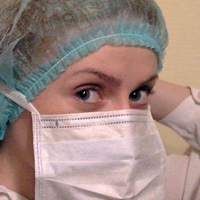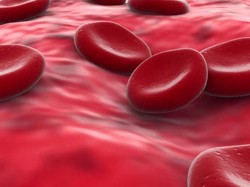Automation of medical and preventive institutions - who benefits? It turns out that not only the administration, but also doctors, and, most importantly, - patients. Read more about this in this article.
Content
In the past few years, distribution has been significantly accelerated
Information technologies in medical institutions. On the one side,
It was associated with an increase in budget financing
Health. In any case, before the start of the crisis 2008. growth
expenses for computerization and procurement of programs was quite noticeable.
Information technologies in medical institutions. On the one side,
It was associated with an increase in budget financing
Health. In any case, before the start of the crisis 2008. growth
expenses for computerization and procurement of programs was quite noticeable.
On the other hand, domestic health care began with «Low
Start». According to the reviews of a specialized press, even in 2007
The level of penetration of complex medical systems in Russian
Therapeutic and preventive institutions were only a few percent
from their total number.
Now, during the crisis, the question of feasibility and possible effect
from IT use becomes especially relevant. What gives
Automation of a medical institution? Who benefits from it? Not
Lie arise «side effects», able to reduce no pros
Automation? Since, in the end, health care exists
For patients, the answer to these questions is logical to start with them.
 Of all those involved in the automation of persons and groups, patients are the most undisputed beneficiaries of this process. Start with the fact that patients receive medical records in well-readable form. Unlike «Paper era» extracts, recipes or results of analyzes - all these documents become available with fundamentally higher quality. Automated systems in the root solve the problem of medical handwriting. In addition, computer input, especially in the presence of prompts and reference books built into the system, significantly reduces the number of errors. The doctor is enough to print the document, put a signature and personal seal.
Of all those involved in the automation of persons and groups, patients are the most undisputed beneficiaries of this process. Start with the fact that patients receive medical records in well-readable form. Unlike «Paper era» extracts, recipes or results of analyzes - all these documents become available with fundamentally higher quality. Automated systems in the root solve the problem of medical handwriting. In addition, computer input, especially in the presence of prompts and reference books built into the system, significantly reduces the number of errors. The doctor is enough to print the document, put a signature and personal seal.
As a result of the introduction of a medical system, the level of information and reference maintenance of patients can significantly improve. The growing popularity of such decisions as the integration of software with information kiosks and television panels allows you to quickly update and convey to citizens who are interested in their open data and informational messages. Open to view information can be represented for universal access to the premises of medical institutions, managers and social services. Doctors reception schedule, schedule of diagnostic offices and thematic reference data on a specific request with the introduction of an information system Patients may recognize without additional appeals to registry employees or, especially as medical personnel. And the integration of the medical information system with the Call Center is able to significantly speed up and increase patient service.
A modern comprehensive medical information system will significantly simplify calculations for the provision of paid medical services. Patients are convenient to have a choice between different payment forms for commercial services. And the developed medical information systems support and cash payments through cash desks and plastic cards, and cashless payment, and payment through insurance programs.
Another important gain for patients in the introduction of a medical information system - information processing speed. Different services inside therapeutic and preventive institutions and even different medical institutions using automation tools can exchange data on patients much more quickly than before. Quite often, the laboratory is located separately from the clinic or processes orders of several clinics. In such cases, it becomes especially significant advantage of using information technologies for the operational transmission of the electronic direction on research and obtaining data on the results by the attending specialist.
All this suggests that with the introduction of medical information systems, patients in most cases receive a higher level of medical care.
For doctors, computers combined into a single medical information system can serve service in several directions of work: as a doctor's assistant when solving a different kind of clinical tasks, when drawing up documents and for planning medical and diagnostic measures. At the same time, for a doctor, as for the main acting person, automation carries with them not only new opportunities and convenience, but also certain difficulties.
Still worth starting from positive moments. The procedure for receiving patients undergo a number of positive changes. Doctor no longer need to write so much by hand. It receives electronic means to register the results of inspection and formation of directions. Depending on the «Advisibility» Medical Information System, these tools may be more or less convenient in mastering and use.
In addition, the connection of individual ART doctor (automated jobs) into a single network of medical institution significantly simplifies the exchange of information and simplifies some organizational actions. The doctor can directly at the reception, if there is such a need, bypassing the registry, write the patient to another doctor, appoint diagnostic ,rapeutic or preventive procedures through the system. Decisions are known when the reception entry can perform, for example, an insurance organization associated with a contractual relationship with a network of commercial clinics.
In terms of solving clinical problems, the use of information technology can improve research results, for example, suggest possible options in the diagnostic process due to rapid access to treatment standards. The doctor gets access to operational high-quality information for the correct formulation of the diagnosis and determination of tactics of treatment, as a result of which the number of medical errors is significantly reduced when patients appointing various drugs (interacting with each other, causing side effects that have contraindications and T.D.). It goes without saying, as part of a medical system, a doctor gets access to standard reference books of medicines, diseases and other decision-making functions.
If we talk about the negative aspects of automation, with whom you have to face the doctors and the younger medical staff, then they manifest themselves mainly at the stage of introducing an information system. It is noticed that any, even the most that is not high, the technology at first can slow down work due to what requires relevant skills and knowledge. And the more difficult the technological solution, the more specialties and services are included in it per unit of time, the higher the risks of misunderstanding, errors and dissatisfaction with the first results.
Partly as a result of the difficulties described, partly under the influence of rumors accompanying any reorganization, people at first can negatively refer to new technology. Some of the fear of losing a job, someone because of low computer literacy (this applies, first of all, those hospitable and preventive institutions, where there were no computers at all). But practice shows that after three to six months, the medical staff gets used to a new procedure for doing business. The rate of making data into the system increases and now exceeds the speed of the letter from the hand. Often, employees can no longer imagine a reverse transition to a paper medical map. For the most active specialists and managers, such a regression would be much more shock than the transition from «Paper» office work in the information system.
Heads of medical and preventive institutions should obtain the most real advantages of automation, t.To. They make a decision on the allocation of financing. Therefore, in many cases, the positive return of IT for management is more quickly and tangible than for doctors. Through the information system, they acquire control over their finances in almost real time.
Adoption of management decisions requires much less time, since the information necessary for this is available to the head not from time to time, but constantly. In the conditions of informatization, it is easier to control the compliance of the quality of treatment with established standards. On the basis of detailed management accounting data and internal statistics, they may apply motivating payment schemes of doctors depending on the personal indicators of each specialist.
Modern systems help track the cost of medical services, analyzing such key parameters as time of specialists, the use of medicines and materials, loading diagnostic and laboratory equipment. For example, the automation of the warehouse of medicines and consumables allows you to optimize their use, improve the organization of storage, increase return per unit area of the warehouse.
Based on these data, the administration of medical and preventive institutions may form the regulatory composition of the service and conduct a comparative analysis of regulatory and actual indicators. The same tools can be used in the development of medical and economic standards across the network of institutions and even the entire healthcare industry.
In cases where the clinic management has the opportunity and the desire to compare the quantitative indicators of the work of medical and preventive institutions before and after implementation, such positive changes are noted as an increase in the bandwidth of the cabinets, optimization of the loading of medical staff (in particular, through the use of electronic schedule with optimization functions Downloads), Reducing Report preparation time and other improvements. Certain benefits are achieved in terms of resource usage. The same scope of work is carried out by less personnel, the economy and consumables are saved (for example, X-ray films), the number of purchased forms of bonds and T.D. and T.NS.
One of the main advantages of automation is the saving time and strength on routine operations and, most importantly, a decrease in the number of personnel errors. So, for example, errors arising from rewritten by nurses of medical appointments to the appropriate magazines, as the latter are automatically formed.
If the patient is a variety of payment forms - the question of additional convenience, then for the management of medical and preventive institutions - this is a serious factor in the struggle for the commercial services market. Especially important may be the construction of interaction with insurers. In connection with the planned transition to the insurance model of health financing, it acquires additional relevance to the task of mutual settlements with insurance companies, both within the framework of mandatory and voluntary health insurance. It is in such cases that the information system gives a very powerful economic effect.
Not the last question for the leadership of therapeutic and preventive institutions may be the safety and safety of patient data. With the formation of uniform databases, especially based on industrial platforms, one can talk about a noticeable reduction in the risks of the patient's loss. Unlike a traditional paper card, an electronic medical card can not be carried out or losing, and it is much more difficult to destroy. And state standards in the field of informatization, compliance with which gradually becomes the norm for the developers of industrial medical systems, allow you to significantly improve the security of personal data.
Today it is still difficult to evaluate all the possibilities that are open to clinical practice with the introduction of information systems. As in other industries, the effect should work here «Critical Mass», When the increase in the number of users of information systems and automated medical and preventive institutions leads to an increase in their number of proposed solutions, to the rapid development of their functionality, many of which several years ago it was impossible to submit.









